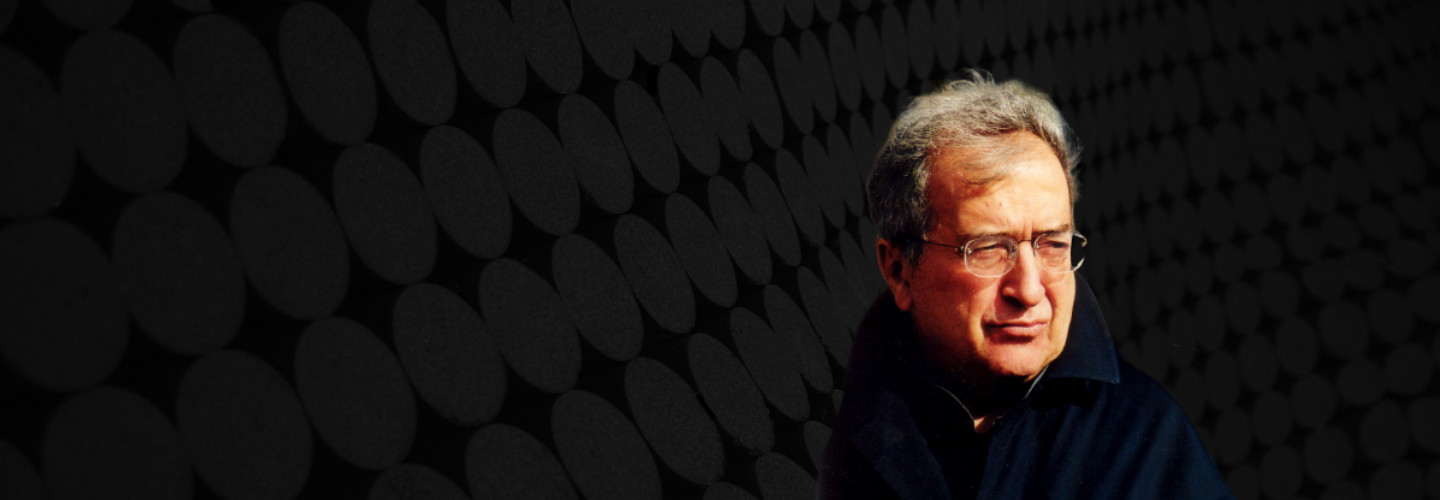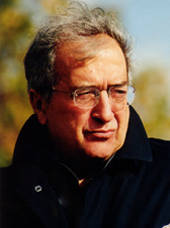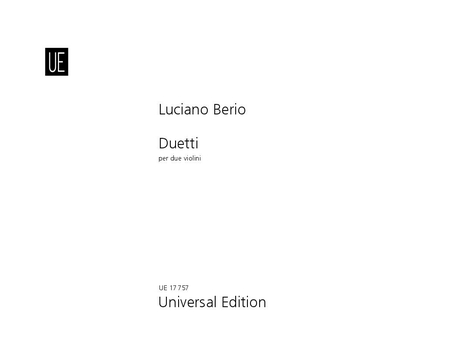

Luciano Berio
Duetti per due Violini
Duration: 70'
Instrumentation details:
1st violin
2nd violin
Berio - Duetti per due Violini for 2 violins
Audio preview
Work introduction
Each of the thirty-four duets bears the first name of a dedicatee – such as Béla (Bartók), Vinko (Globokar) or Aldo (Bennici). The booklet of the CD which was released in 1992, refers to the duets as making up Volume I – which indicates that the composer initially planned to follow it up; a plan he never realised.
Each duet, the shortest of which lasts 29 seconds whereas the longest one has a duration of 3’56”, bears the date and place of its composition, so that the cycle can be regarded as a kind of musical diary. For instance, the first three duets were composed on the same day, on 10 November 1979, at Berio’s home in Radicondoli. Four days later he was in Stockholm where he wrote Rodion (Schedrin) and the next day two more: Maja (Pliseckaja) and Bruno (Maderna).
Most of the duets were written in Radicondoli, but some were jotted down in Paris, Tel Aviv, Florence and Rome.
Luciana Galliano reports on the origins of the series:
It was the musicologist Leonardo Pinzauti, who gave his friend Luciano Berio the idea of composing a series of short pieces which could be used by students of the violin as a musical work-out, a training ground for contemporary musical language and music in general.
So he began a series of Duetti, some of which are genuinely educational in that the level of technical difficulty is restricted to one of the two parts – as in the duet entitled Leonardo (Pinzauti). As if it were developing ineluctably from the fascination exerted by the timbre of such a historical instrument, the series moved further and further away from any original goal to become a re-exploration, in the jaunty, ironic style at which, being of its time, Berio’s music excels, of the different landmarks in violin composition, calling for ever more rigorous performance techniques, as in Pierre (Boulez) or Lorin (Maazel). Since each piece takes its title from a person (composer, performer, musicologist, etc) in the musical world today, these diverse experiments in language paint a personal and appealing portrait of the contemporary music scene.

